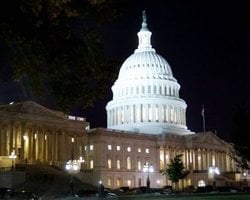With more uninsured Americans gaining health insurance coverage under the Affordable Health Act, also referred to as Obamacare, will the number of emergency room (ER) visits go down?
A study carried out at the University of Michigan Medical School and published in Academic Emergency Medicine concluded that ER visits will probably stay the same while clinic visits will rise.
Adrianne Haggins, M.D., M.S. and team gathered and analyzed data from the National Center for Health Statistics at the CDC (Centers for Disease Control and Prevention).
They focused on patterns of non-emergency and emergency outpatients visits made by teenagers after a major expansion of public health insurance coverage was created for this age group (CHIP – Children’s Health Insurance Program).
CHIP, a federal/state program which was signed into law in 1997, brought near-poor children into the umbrella of state-sponsored health insurance. Over seven million children are covered by CHIP, which continues being an option under the Affordable Health Act.
The research team compared trends across the country in teenage ER and outpatient visits with those of young adults aged 19 to 29 during two periods – 1992-1996 and 1999-2009 – i.e., pre- and post-CHIP periods.
As the majority of states did not allow young adults to enroll in CHIP, the team was able to gauge ER visit trends in the two periods in the two age groups.
More health insurance does not appear to impact on ER numbers
Dr. Haggins and team found:
- Outpatient visits increased considerably among adolescents after CHIP came into effects. Outpatient visits among young adults remained unchanged.
- ER visits by young adults increased after CHIP came into effect, but remained flat for adolescents.
- The outpatient-to-ER visits fell among young adults and rose among adolescents.
Dr. Haggins said:
“Looking at both emergency department visits and outpatient visits together is important. When we’re thinking about access to health care and insurance reform, insurers and hospitals can not solely focus on limiting the number of emergency visits – we have to make sure there’s adequate access to alternative outpatient care.”
CHIP made it easier for adolescents to get outpatient care while still keeping ER care available.
Haggins added:
“If a newly insured patient has a hard time finding a provider who would accept their insurance, or getting appointments with the ones who will, there is a real possibility that we will continue to see them go to the emergency department. Accessing the ER is a cultural learned behavior partly because the public knows that the ER is always open if they have difficulty accessing care.”
“We have to offer them alternatives once they are there, and better understand what factors drive them there. We need to coordinate with other ambulatory settings to help patients find providers and be aware of alternative settings to change patterns of healthcare seeking.”
According to the U.S. Census Bureau, 47.95 million American had no health insurance coverage in 2012, i.e. 15.4% of the population (compared to 15.7% in 2011).
Online roll-out of health-insurance exchanges fraught with problems
On October 1st, 2013, the Obama administration launched the online marketplace for health-insurance exchanges where millions of uninsured Americans can acquire health insurance.
Feedback so far from people who have gone online has been very negative; there have been serious problems trying to log in, filling out forms has been “challenging” to say the least, government agencies repeatedly fail to communicate with each other online, the website crashes a lot, etc.
According to the Wall Street Journal, lawmakers are calling for either Health and Human Service Secretary Kathleen Sebelius’ resignation, or at least for her to appear before a congressional hearing.
According to White House figures announced a few days ago, at least 17 million people have visited the website since its launch.
The government is hoping to have 7 million individuals enrolled by the end of March 2014, as well as millions more on Medicaid.
Unless the online mess is resolved rapidly, meeting that goal is going to become impossible.
U.S. authorities will not release any relevant numbers, i.e. how many people have successfully signed up, until next month.

